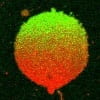An oversight of research activities, facilities, and expertise in individual research groups. No particular order but moving from left to right follows a trend of going from device engineering, to materials, to characterization and fundamental studies.

- Semiconductor lasers: distributed-feedback lasers, surface-emitting lasers
- Intersubband phenomena in semiconductor superlattices
- Terahertz photonics: terahertz quantum-cascade lasers, terahertz detectors
- Terahertz sensing and spectroscopy
- Fabrication of semiconductor lasers
- Terahertz and Mid-infrared plasmonics
- Emerging memory devices and logic devices for computing
- High-power high-frequency electronic and optoelectronics devices
- Optical interconnects and other digital and analog optical links
- Light-emitting-diodes and photodetectors using inorganic and organic materials
- Single crystal growth in bulk and thin film formats of nitrides using supercritical ammonia or metal fluxes
- High pressure autoclaves (< 2500 atm, 600 C or < 100 atm, 1000 C) suitable for annealing of small samples in nitrogen-active environments
- Thin film deposition tool development (in particular high pressure MOCVD tool)
- Characterization of single crystal materials
- Thin film growth, processing, and characterization
- Synchrotron xray scattering and absorption on thin films
- Atomic layer deposition, molecular layer deposition, and growth of metal oxides and nitrides
- Electrical device fabrication and measurements (MOS capacitors, Schottky diodes)
- Thin film deposition tool development
- Collaborations with semiconductor and chemical industries
- Roll-to-roll enabled Janus particle fabrication using oxide or polymer particle cores half coated with various metals
- Field or capillary-driven particle self-assembly to 3D structured coatings ( colloidal crystals for optical coatings and templated materials)
- Variable emissivity fluids
- High speed 3D confocal microscopy for characterizing structure during colloidal assembly
- Fluorescence Recovery After Photobleaching (FRAP)
- Brain-on-chip
- Living neural network computation
- Microtechnology for models of neurological disorders
- Fabrication of oxide and chalcogenide glass bulk and thin films
- Engineering of glass structure, single crystal architecture and its properties by light and electrons
- Photoinduced phenomena in glass
- Physical and chemical properties of glasses
- Structure of glass bulk and surfaces
- Organic and hybrid optoelectronic materials and processing
- Conjugated polymer design, synthesis and processing
- Solution processing of organic/hybrid materials for large area device fabrication
- Materials and processes for organic field effect transistors and organic electrochemical transistors
- Composite materials and processes for high capacity storage materials /battery electrodes

Greg Ferguson
- fundamental studies of wettability and interfacial motion
- formation, interfacial properties, and decomposition of unstable oxides
- layer-by-layer assembly of nanoscale precursors for higher order materials.
- unusual kinetics in chemical and physical systems

- Microfluidics employing physical fields and/or affinity chemistry for biological sample processing
- Optical and electrical sensors for the detection and monitoring of biological particulates
- Flow responsive polymers and drug delivery carriers
- microfluidics and soft lithography
- confocal and fluorescence microscopy
- neutron reflectivity
- lipid membrane physical chemistry and biochemistry

Daniel Ou-Yang
- Noise and fluctuations in systems far from equilibrium
- Interficial phenomena at the interface of living and nonliving materials
- Electrophoresis, dielectrophoresis and photophoresis
- Optical imaging of the stress-strain field in drying coatings
- Electronic structure of molecules and materials systems for mechanistic understanding photoexcitation, charge transfer, and catalysis.
- Computational models of experimental materials, including defects, surfaces, and disorder.
- Structure-property relationships of complex systems.
- Combine molecular and material descriptions.
- Electrochemical intercalation of organic molecules in 2D materials
- Self-assembled 2D van der Waals materials
- Intrinsic defects in 2D-based transition metal chalcogens
- Chemical tuning of 2D van der Waals materials with isovalent elements
- DNA sequencing in 2D transition metal dichalcogenides

Volkmar Dierolf
- Defects and dopants in insulating and semiconducting materials. Mainly: nitrides, oxides, and chalcogenides
- Spectroscopical characterization of the material systems above both high-resolution cw- and time-resolved.
- Application space: ferroelectrics, nonlinear optics, LEDs, lasers.
- Laser processing of materials used for instance for crystallization of glass.
- Exciton dynamics and transport in organic semiconductors
- Organic molecular materials for all-optical switching and electro-optic modulation in integrated photonics
- Four-wave mixing
- Pump&probe transient gratings for sensitive detection of transport and excited state dynamics
- Fluorescence spectroscopy and dynamics
- Study and development of 2nd and 3d order optical susceptibilities and effects in molecules and materials

- Photochemistry for renewable energy applications.
- Transient absorption spectroscopy on molecules and materials systems for mechanistic understanding of energy flow and charge transfer.
- Emissions spectroscopy (time resolved and steady state).
- Electrochemical analysis.
- Synthesis of photoactive inorganic and organic molecules.

- Nanoscale measurement of chemical heterogeneity of sample surface with atomic force microscopy and infrared laser in the air and liquid phase
- Nanoscale measurement of the surface potential of samples with pulse force kelvin probe force microscopy
- Measurement of polaritons through atomic force microscopy-based optical techniques
- Infrared Spectroscopy
- Defects and impurities in semiconductors and transparent conducting oxides












